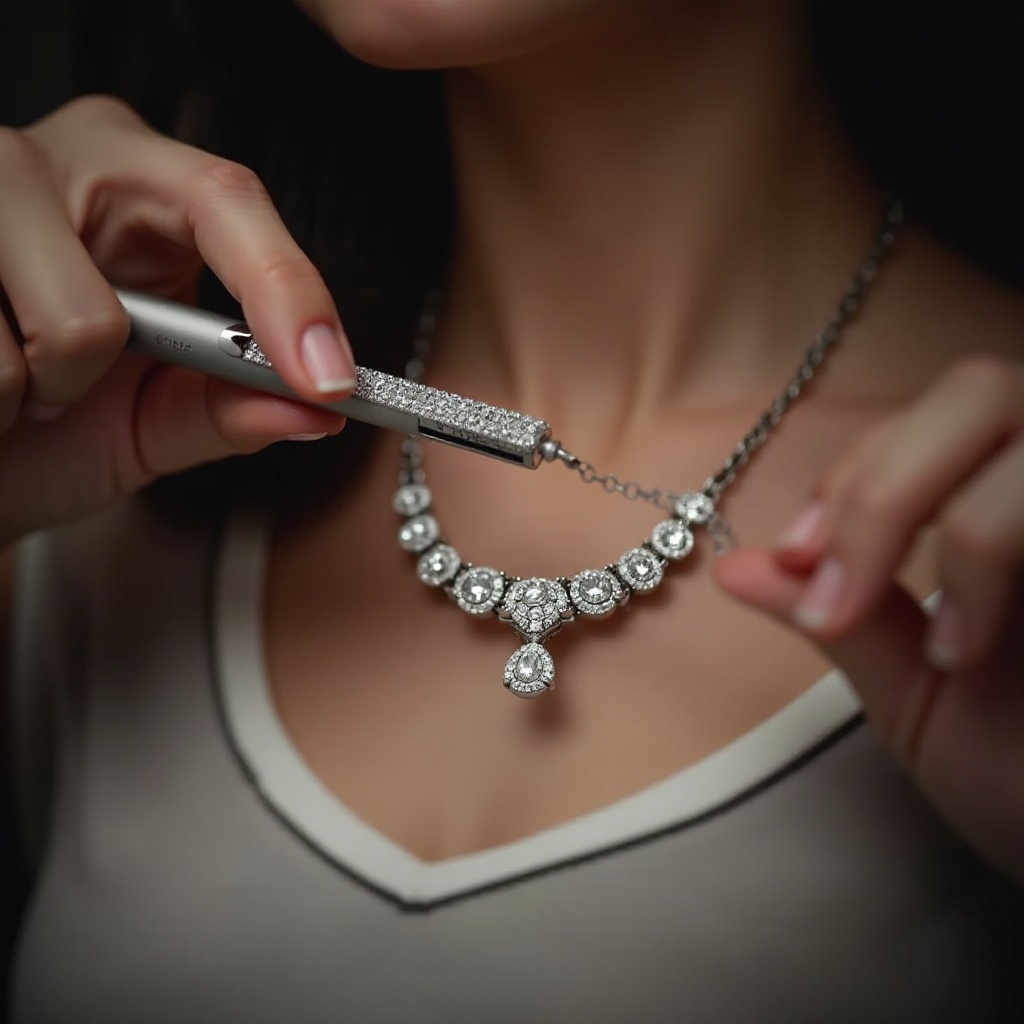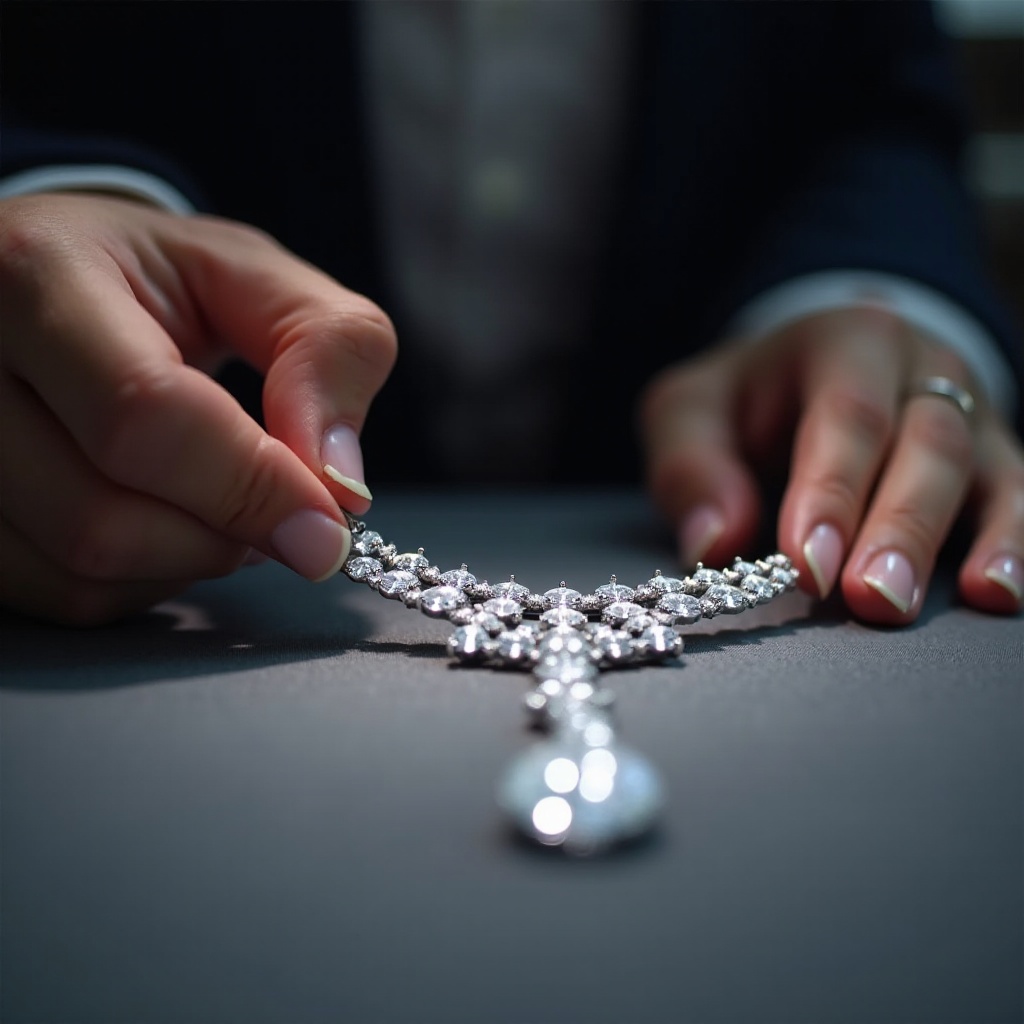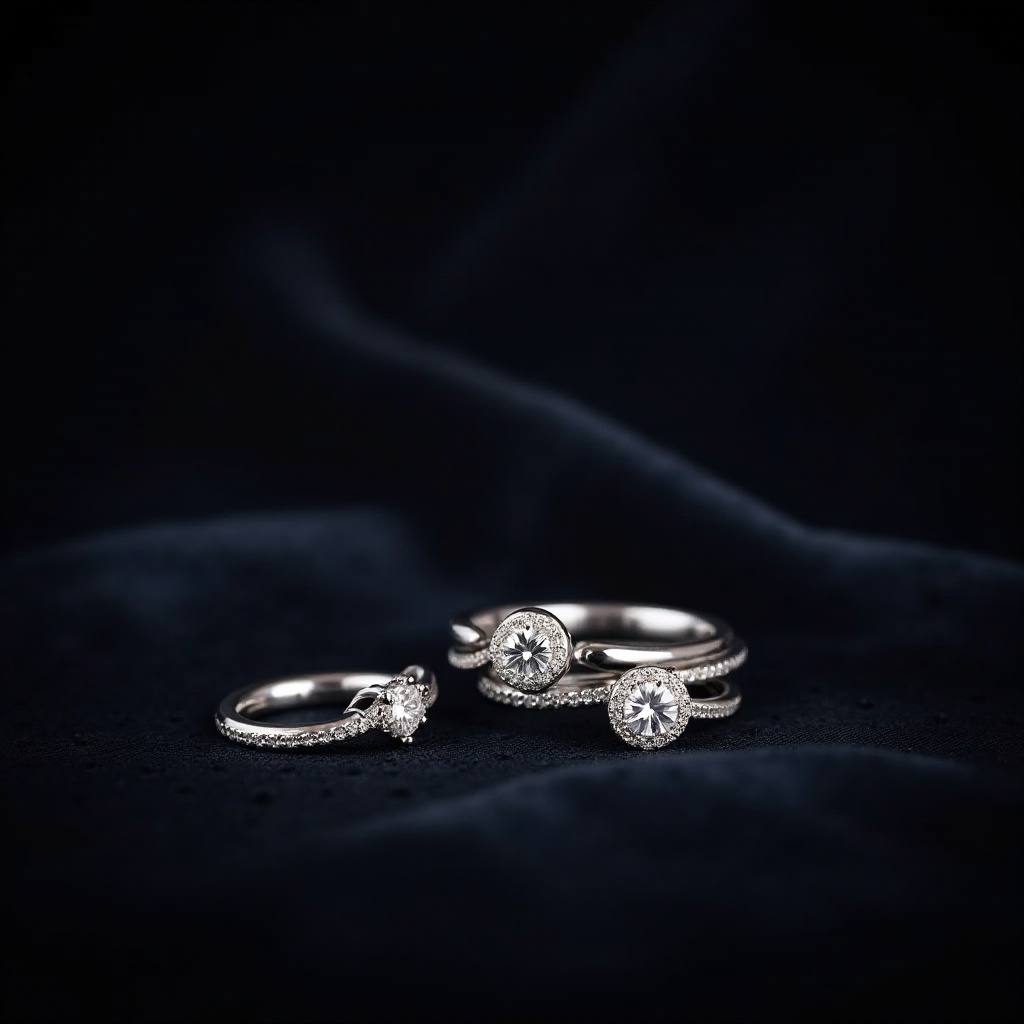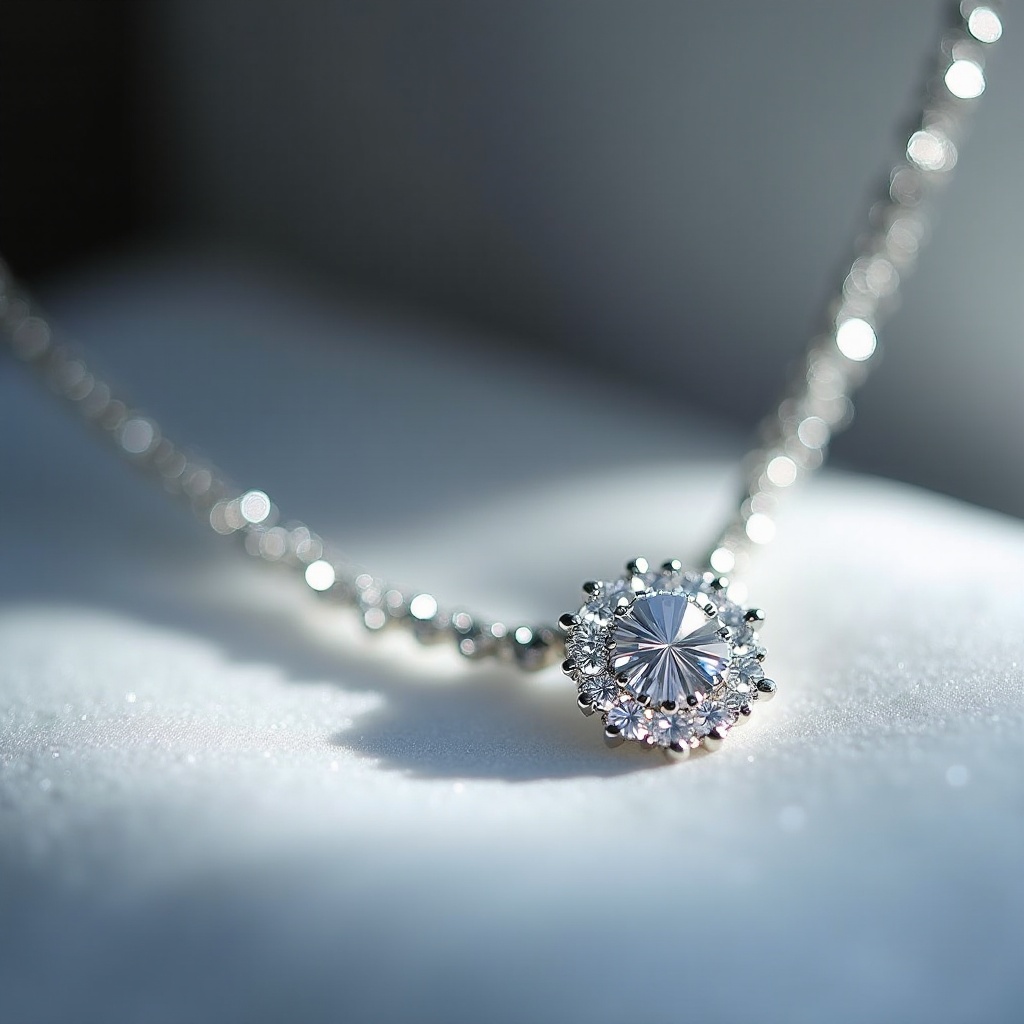Introduction: Understanding Diamond Authenticity
The allure of diamond necklaces is timeless, a symbol of luxury and elegance that has captivated people for generations. In today’s expansive jewelry market, verifying the authenticity of your diamond necklace is not just a luxury—it’s a necessity. Amidst the rise of sophisticated imitations, having the know-how to differentiate genuine diamonds from fakes is crucial, whether you are a devoted collector or a first-time purchaser. This guide will equip you with the essential tools and insights needed to confidently verify the authenticity of diamond necklaces, thereby safeguarding your investment and ensuring that your adornments remain genuine and valuable.

Diamond Tester/Crystal Tester: Your First Line of Defense
How Diamond Testers Work
Diamond testers are indispensable tools employed to swiftly verify the authenticity of diamonds. By measuring thermal conductivity, these testers distinguish genuine diamonds from synthetic substitutes. A real diamond efficiently conducts heat due to its dense crystal structure, so when you place the tester’s probe on the stone, it calculates how effectively the heat is dissipated. A rapid decline in temperature reading typically signifies a real diamond, while synthetic counterparts show lower heat dispersal. These testers are user-friendly, providing immediate results that can be incredibly insightful for quick evaluations.
The Importance of Purity and Crystal Testing
Beyond basic conductivity tests, crystal testers delve deeper into the gem’s core by assessing light dispersion and clarity. This test examines the purity and carbon composition, two fundamental markers of authenticity. Light reflecting through a real diamond creates a stunning array of colors, known as fire, and analyzing this dispersion helps verify the stone’s integrity. Jewelry professionals deploy these tools to complement thermal conductivity results, facilitating a comprehensive assessment that helps distinguish diamonds from cubic zirconia and other simulants.

The Thermal Conductivity Test: Scientific Validation
The thermal conductivity test is a cornerstone of diamond verification, particularly valued for its scientific basis and accuracy. It relies on the principle that real diamonds efficiently conduct heat due to their atomic structure, which consists of closely packed carbon atoms. This test requires minimal equipment, typically a diamond tester, and provides accurate, real-time verification of your necklace’s stones. Unlike other methods, the thermal test is non-destructive, allowing for safe evaluation without risking damage to the gem. For anyone serious about authentication, this method is an essential step in distinguishing genuine diamonds from well-crafted imitations.
While this test is reliable, it’s also essential to consider other factors that contribute to a diamond’s authenticity. For instance, imperfections or inclusions within the diamond are normal unless it’s a synthetic or heavily treated diamond. Natural diamonds often contain tiny mineral traces or variations, observable under magnification, providing additional confirmation of authenticity. Combining thermal test results with physical inspection creates a more detailed picture, lending further credibility to the gemstone’s authenticity.

The Role of Jewelers in Authentication
Professional jewelers are an invaluable resource in the diamond authentication process. Equipped with advanced tools and years of experience, jewelers use methods such as spectroscopy and microscopic examination to meticulously analyze diamonds. Spectroscopy helps in identifying trace elements that specify a diamond’s origin, while microscopic examination unveils details invisible to the naked eye, such as unique internal characteristics like “fingerprint” inclusions found only in natural diamonds.
Trusting a jeweler’s expertise means tapping into a wealth of knowledge, ensuring an accurate assessment of your diamond’s authenticity. Reputable jewelers can also provide certification from esteemed organizations like the Gemological Institute of America (GIA), adding a layer of credibility and reassurance. Whether you’re in doubt or seeking a second opinion, a professional evaluation is a prudent step in confirming the legitimacy of your diamond necklace.
Summary
Authenticating a diamond necklace requires a strategic blend of practical tools and expert insights. Initiating the process with a diamond tester provides timely clarity, while a crystal test reinforces understanding of the gem’s properties. For conclusive verification, seeking a professional jeweler’s expertise is indispensable. This combination of actions ensures that you are not only investing in genuine gemstones but also preserving the integrity and value of your cherished pieces. By following these comprehensive steps, you can confidently navigate the world of diamond jewelry, assured of your selections’ authenticity and worth.
How can you tell if a diamond necklace is real or fake?
Identifying whether a diamond necklace is genuine involves multiple approaches. It’s crucial to consider the setting and craftsmanship—real diamonds are often set in precious metals like gold or platinum, which should be marked with purity stamps. Look for a hallmark indicating the metal’s purity. Additionally, genuine diamond necklaces will often have certifications from reputable gemological organizations like the GIA or AGS. Examination under magnification can also reveal inclusions inherent to natural diamonds, unlike in many imitations.
What methods can you use to check if a diamond is real at home?
Conducting simple tests at home can help shed light on a diamond’s authenticity. The water test, where you drop the diamond in a glass of water to see if it sinks (real diamonds will), and the fog test, where you breathe on the stone to see how quickly the fog dissipates (real diamonds disperse heat rapidly and won’t stay foggy long), are easy and quick methods. Additionally, examining the stone’s refractive properties using a newspaper or dot test can be enlightening. The text or dot seen through the diamond should appear distorted or unreadable for a real diamond.
How can you use a flashlight to determine if a diamond on a necklace is real?
Using a flashlight involves observing the diamond’s interaction with light. Shine the light through the stone and observe how the light refracts. Genuine diamonds display a unique brilliance and fire, characterized by white and rainbow-colored light reflections due to their high refractive index. Place the flashlight underneath the diamond and observe the light pattern on a surface; the dispersed light should demonstrate high brilliance and strong rainbow flashes if it’s a real diamond. This method is more effective in dim lighting conditions.
How can visual cues help in distinguishing a real diamond from a fake one?
Visual cues are critical in differentiating real diamonds from fake ones. Authentic diamonds exhibit a remarkable sparkle, superior in both brilliance (white light reflection) and fire (colorful light reflection). They typically have sharp edges and a precise symmetry due to their cutting. Check for any visible inclusions or imperfections; natural diamonds often have them, whereas many fakes do not. Observe the stone’s girdle under magnification; a frosted or faceted appearance is an indicator of authenticity. Also, the difference in reflective quality and stone clarity can often distinguish real diamonds from materials like cubic zirconia.


